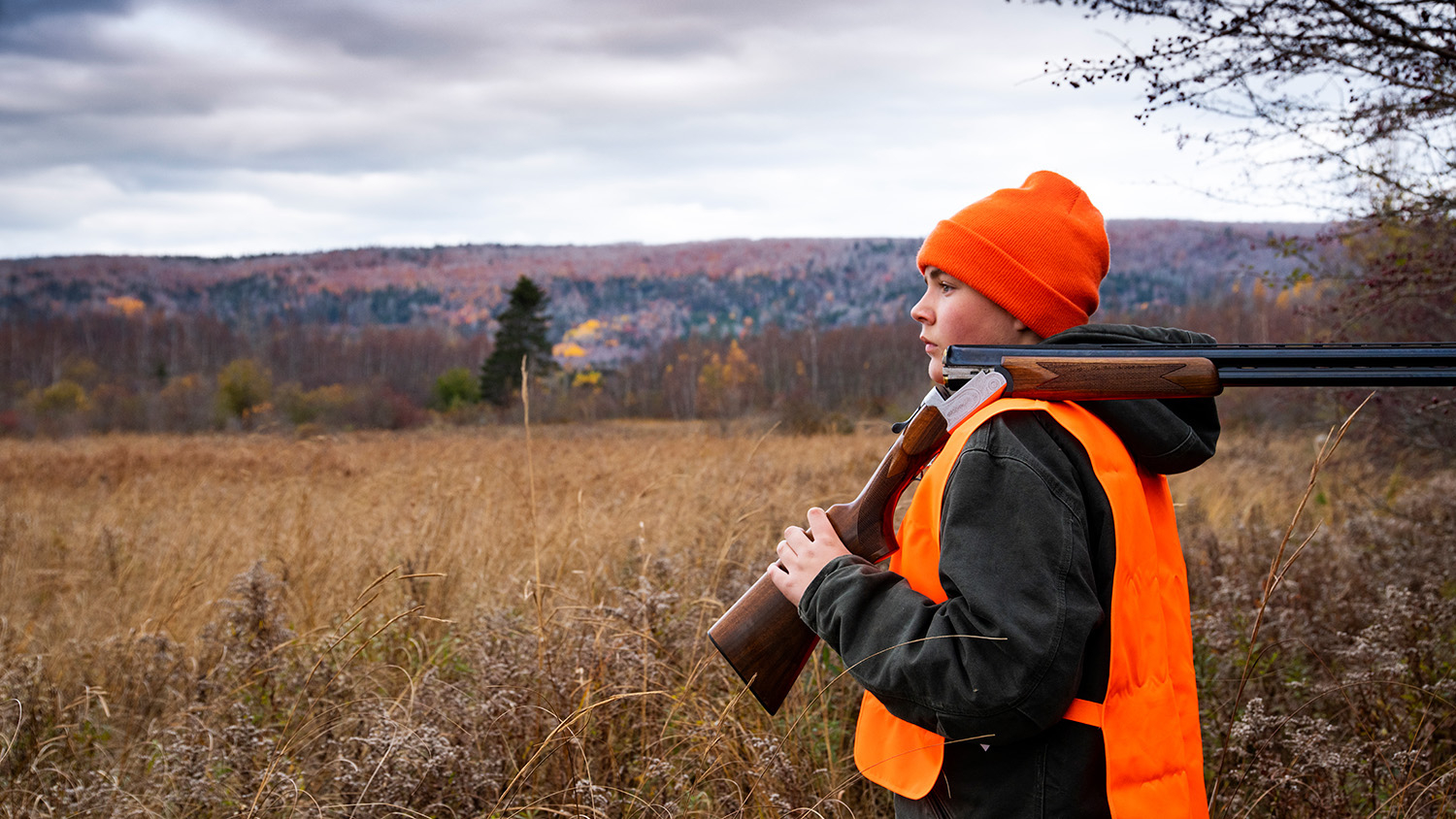Experts Share Strategies for Recruiting Hunters on College Campuses

Hunting provides significant economic, cultural and ecological benefits. For example, approximately 60% of state wildlife agency budgets are funded through hunting- and fishing-related activities.
“Without hunting — and fishing — wildlife conservation as we know it today wouldn’t really exist,” said Lincoln Larson, an associate professor of parks, recreation and tourism management at the NC State College of Natural Resources.
But these benefits are at risk of being lost because the number of hunters in the United States has steadily declined over the last 50 years, largely due to urbanization and demographic changes.
Wildlife agencies and non-governmental organizations are working to recruit new hunters, retain old hunters and reactivate those who have quit the sport. The problem is, according to Larson, many of these programs — often referred to as R3 — largely fail to attract new hunters.
Larson and Richard von Furstenberg, a Ph.D. candidate at NC State, have been testing and examining R3 programs across the county designed to recruit nontraditional audiences. Their most recent study found that recruitment programs might experience increased opportunity for success by targeting college campuses.
The study’s findings were used to inform a new guide and toolkit published by the Georgia Wildlife Foundation to equip practitioners with everything necessary to initiate and maintain an R3 program with their local college or university.
We recently spoke with Larson and Furstenberg about R3 programs and how practitioners can effectively recruit new hunters on college campuses. Check out the Q&A below.
Why have R3 programs failed to attract new hunters?
Furstenberg: This movement started in the 1980s, but it really became popular within wildlife agencies over the last 20 years to address the decline in hunter numbers. Most of the focus has been on the recruitment of new hunters because it represents the shortest route to boosting participation. But this recruitment has traditionally targeted an audience already familiar with hunting: young hunters who are white and live in rural areas. This is not necessarily a bad thing because we need more hunters, but these efforts don’t really broaden the base of traditional hunting participants. If we’re going to make hunting more relevant in the 21st century, we need to invite and foster diversity in terms of what a hunter looks like, where they come from, and why they hunt.
What makes college students ideal targets for R3 programs?
Larson: College campuses are an ideal place to recruit potential hunters for a number of reasons. First, across the U.S, more than 40% of young adults (over 20 million students) attend some type of college. Collaborative R3 efforts between agencies, NGOs, and universities provide a streamlined opportunity to engage this huge audience of young people. From our research across 22 states and universities, we also know that almost a quarter (22%) of those students are “potential hunters”, meaning they are interested in hunting but have not hunted before. Perhaps most notably, these potential hunters represent a significant departure from the “traditional” hunter profile. These students are far more diverse with respect to race, ethnicity, and gender, and a high proportion are from urban areas. These differences are key when we think about reaching beyond the traditional audience and creating a “bigger tent” for hunting.
What are some common challenges that prevent college students from hunting?
Furstenberg: The biggest predictor of whether or not someone hunts is whether or not they have family members who hunt. That social support is critical, providing the knowledge, skills, and opportunities related to hunting. Many college students don’t have those connections, and because they’re coming from non-hunting families, they lack that support. Some other common challenges are logistic in nature and come with being a college student, including the challenge of firearms and equipment storage, the time commitment, cost, and lack of transportation to viable hunting sites.
How can R3 programs address these challenges to recruit college students?
Larson: The key to addressing these challenges is drawing on the strengths of wildlife agencies, NGOs, and universities in a collaborative R3 effort. No single group can do this alone. Agencies and NGOs are positioned to provide the skills, knowledge, resources, and access to help students develop into safe and ethically-minded hunters. Universities can find interested students, mobilize them, and conduct evaluation of R3 programs. Evaluation is a piece that’s been historically absent from R3, and that’s where most of our work at NC State has focused. The data we have been collecting from programs across the country tells us how well we are meeting the challenges these new participants face, and how we might do it better.
Your studies have examined the demographics and motivations among college students in R3 workshops. Why are these important to consider?
Furstenberg: An effective R3 program for college students has to resonate with a new and diverse audience. That means doing the work to understand who is represented, where they are from, and what drives their interest in hunting. Using that information, practitioners can create content and mentorship that is relatable and relevant to the participants. This is critical to avoid a one-size-fits-all R3 approach that leaves students feeling disconnected or unwelcome.
How can R3 programs retain new hunters?
Furstenberg: Because the major emphasis to date has been on recruitment, retaining new hunters is really the next frontier for these R3 programs. Outdoor recreation research, and our own experience, suggest that continued social support is critical for these new hunters to persist. That means R3 program leaders have to find ways to create and maintain relationships between participants and hunting from one season to the next. This might include pairing students with peer mentors, or holding a non-hunting event in the off season such as a wild game dinner, a nature hike, or scouting trip. Providing that continuity opens the door for more sharing about participant needs or challenges and creates opportunities for the mentors to help. Even if program participants don’t end up hunting, they will have a better understanding of the value of hunting and might become hunting advocates.
Larson: Recruiting new hunters is a challenging, but important, endeavor. We are hopeful that our new college-focused R3 guide and toolkit, which is based on the lessons we have learned over the years, will inspire practitioners to identify new ways to create a broader and more inclusive hunting community — ultimately reshaping the future of wildlife conservation.
This post was originally published in College of Natural Resources News.


